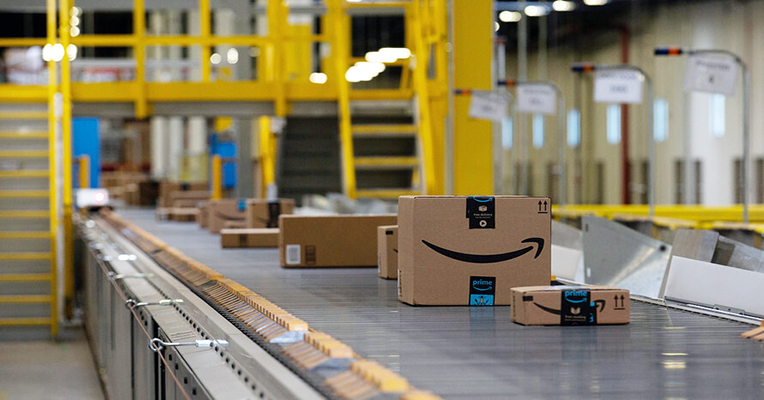As an Amazon FBA seller, your business relies heavily on the efficient storage and delivery services provided by Amazon’s fulfillment centers. While the majority of transactions proceed smoothly, there is always a possibility of errors occurring during the handling of your inventory by Amazon.
One of the most common challenges faced by sellers is the loss or damage of inventory, prompting the question: “How can I recover the financial losses incurred?”
This situation can be frustrating for sellers, as lost or damaged inventory not only impacts sales but also hinders keyword ranking and potential customer reviews, affecting long-term profitability.
Fortunately, Amazon offers reimbursement options for sellers whose inventory has been lost or damaged. However, in some cases, sellers need to initiate a claim with Amazon to receive the reimbursement they are entitled to.
In this comprehensive guide, we will delve into the intricacies of Amazon FBA reimbursements, providing you with valuable insights on how to reclaim the funds owed to you.
Understanding Amazon FBA seller reimbursements: A lifeline for sellers
Amazon FBA reimbursements refer to the compensatory payments made to sellers for inventory that has been lost or damaged while stored in Amazon’s fulfillment centers. The FBA program was created to simplify the selling process for merchants, allowing them to outsource inventory storage and order fulfillment to Amazon.
Despite Amazon’s advanced logistics network, instances of lost or damaged inventory can still occur. In such cases, Amazon takes responsibility and reimburses the seller for the financial losses incurred.
Unfortunately, many sellers may remain unaware that their inventory has gone missing or has been damaged while in Amazon’s possession. Consequently, they fail to claim hundreds or even thousands of dollars that are rightfully owed to them.
While Amazon often automatically issues reimbursements for such incidents, it is crucial for sellers to proactively monitor their inventory and file claims with Amazon to ensure proper reimbursement.
Different types of Amazon FBA lost inventory claims
To facilitate the reimbursement process, Amazon provides specific claim categories for different scenarios involving lost inventory. Familiarizing yourself with these categories will enable you to file claims accurately based on where and how the loss or damage occurred during the fulfillment or storage process.
The following are the types of Amazon FBA lost inventory claims:
- Shipment to Amazon Claim: If your products are lost or damaged during transit to Amazon’s fulfillment centers, you may be eligible for reimbursement. Amazon requires additional documentation such as shipment ID, proof of ownership, and tracking information before processing a claim in this category.
- Fulfillment Center Operations Claim: Should your products sustain damage or go missing due to an Amazon fulfillment center’s operations or a facility operated on behalf of Amazon, you can file a claim to seek reimbursement.
- FBA Customer Returns Claim: If your inventory is lost, damaged, or not returned by customers, you may be eligible for a customer return reimbursement. To file this type of claim, Amazon must have already refunded or replaced the items on your behalf as a seller.
Eligibility for Amazon FBA seller reimbursement
To qualify for an inventory reimbursement, you must meet specific criteria outlined by Amazon:
- The item should be registered in FBA at the time of loss or damage.
- The item must comply with FBA product requirements, restrictions, and inventory guidelines.
- You must have sent the exact items and quantities specified in your shipping plan to Amazon.
- The shipment status for the item should not be canceled, deleted, or pending disposal at your request or due to Amazon’s decision.
- The item should not be defective or damaged by a customer.
- During the claim review process and any subsequent appeals, your seller account must be in normal status.
Maximizing Amazon FBA reimbursements is crucial for sellers to recover their financial losses and ensure the long-term profitability of their businesses. By understanding the intricacies of Amazon FBA reimbursements and familiarizing themselves with the different claim categories, sellers can proactively take steps to reclaim the funds owed to them.
Monitoring inventory regularly is essential for identifying instances of lost or damaged inventory. Sellers should be diligent in reviewing their inventory reports and comparing them to their own records to ensure accuracy. By doing so, they can identify any discrepancies and initiate the reimbursement process promptly.

When filing a claim: What happened?
When filing a claim, sellers must provide all the necessary documentation and information required by Amazon. This may include:
- shipment IDs
- proof of ownership
- tracking information, or evidence of customer returns.
Attention to detail and thoroughness in providing the required information will increase the chances of a successful reimbursement.
It’s important to note that not all instances of lost or damaged inventory will automatically result in reimbursement from Amazon. Sellers must actively monitor their inventory, identify discrepancies, and file claims accordingly. Taking a proactive approach to the reimbursement process will help sellers recover the funds owed to them and mitigate the negative impact on their business.
0



